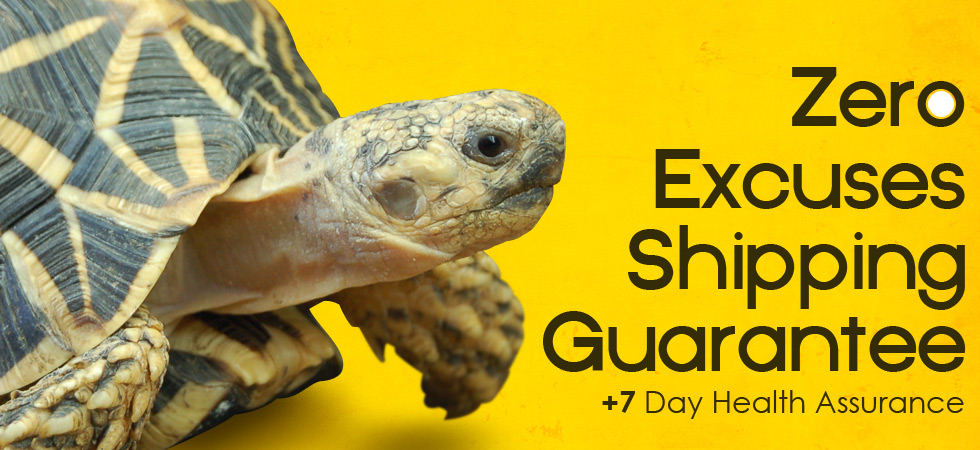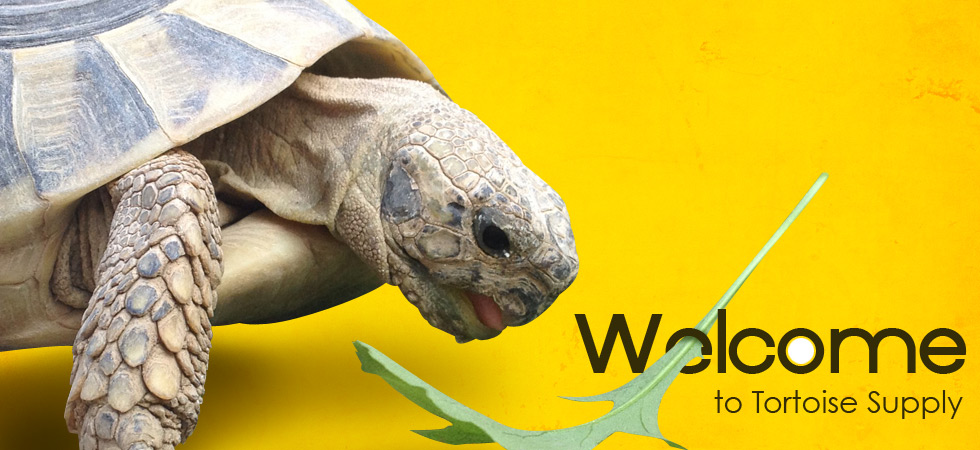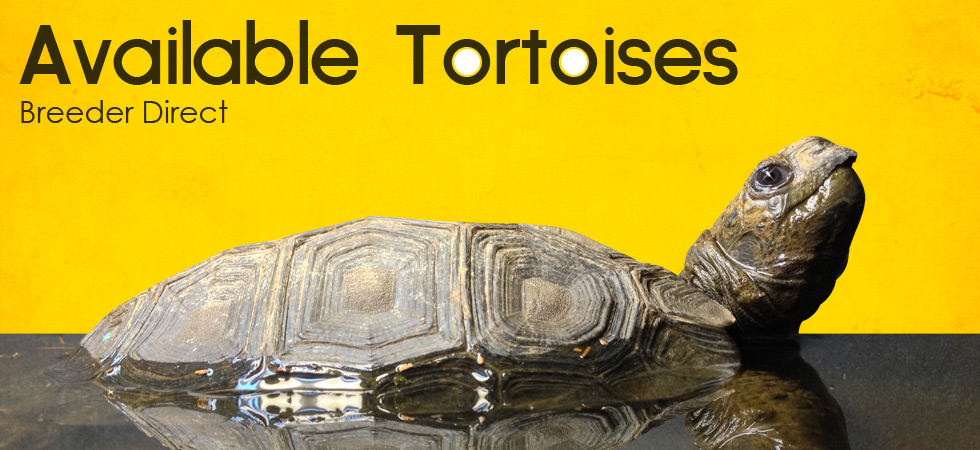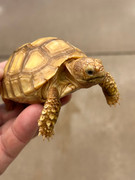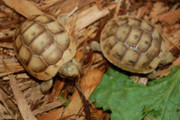Categories
- Tortoises For Sale
- Choose Your Exact Tortoise
- Lower Cost Tortoises For Sale
- Baby Tortoises For Sale (All Species)
- Pet Tortoises For Sale - 4" Size or Larger
- Egyptian Tortoises For Sale
- Greek Tortoises For Sale
- Hermanns Tortoises For Sale
- Leopard Tortoises For Sale
- Marginated Tortoises For Sale
- Pancake Tortoises For Sale
- Radiated Tortoises For Sale
- Redfoot Tortoises For Sale
- Russian Tortoises For Sale
- Star Tortoises For Sale
- Sulcata Tortoises For Sale
- Wholesale Tortoises
- Food Items
- Lighting
- Substrates
- Tortoise Kits & Cages
- Heat Mats & Heat Sources
- Cage Furniture & Bowls
- Supplements & Vitamins
- Seed Mixes
- Medical & Tools
- Books and Literature
- Waterland Tubs
- Toys & Gifts
- Shirts & Shipping Add-Ons
- Other Products
Far too often, people check the local weather when deciding whether or not “today is a good day to put the tortoises outside.” They then go stick then in a kiddie pool on the patio and think all is well. While in general this sounds like a straightforward, obvious idea, there are many, many factors that can significantly change the temperature in your immediate area.
As a broad example with us, the fact that we live far from the central part of our city (Las Vegas) makes our temperatures almost always different than what is forecast. We tend to be warmer on the summer days, and colder on the winter nights because of this. We also swing more in temperature day-to-day than an inner city would. Major cities with their asphalt, concrete and buildings tend to hold a more steady temperature, where the more rural areas outside the city will swing more in temperature day to night. As the buildings, concrete and other structures heat up in the day, they will hold that heat into the night while the air temperature naturally cools. By the end of the night, the structures have started to cool off, and by the following morning, the opposite effect starts to take place. The sun starts heating things up, and the structures that are now cooled off begin to hold in the cool for some time while the sun tries to heat them up. This effect is much less out in the open areas, where there are less dense objects holding the temperatures in. Concrete, buildings, houses and even automobiles all contribute to this.
On a smaller scale, this effect can be noticeably measured even within a backyard. The temperature right up against your house is going to be slightly more steady (for better or worse, but we’ll get back to that) than a temperature that is out in the open. A driveway creates a lot of heat, and will radiate this heat back into the surrounding environment for hours after the sun is no longer hitting it.
Now to bring it down to the tortoise level, these same rules apply and should be considered while building an outdoor tortoise enclosure. Far too often we hear about people who had their tortoises overheat and die while being out in the sun on a day that “wasn’t even that hot.” A common example is when someone has their tortoise in a plastic bin (which is fine for an indoor enclosure), and they have put it out in the sun on their driveway to get a few hours of natural sunlight. Say, for example, that the outside temperature was 80 that day. When an 80 degree sun hits a driveway, the driveway can and will heat up to much higher than 80 degrees. Even if the enclosure was completely shaded, the heat of the driveway is going to radiate up through the plastic bin, and can easily be well over 120 degrees. This is particularly true if the color of the plastic bin or enclosure is a dark color like black, which heats up much more when put into direct sun. In our early tortoise keeping days, we had a bin with baby cherryheads out getting some direct sun on a day that was no more than 75 degrees. Within a very short time (2 hours maybe), they had overheated and died. We didn’t check at the time, but the bin was likely well over 110-120 degrees.
Glass enclosures are as bad or even worse than dark colored plastic. Just like a car parked in the sun on a hot day will heat up to 140-150 degrees (at least it does here in Vegas), a glass tank in the sun will heat up much higher than a tolerable level, and should not be used in the sun under any circumstances.
Even well-built outdoor enclosures can suffer from temperature problems if they aren’t large enough. We commonly hear people say they have built a fancy outdoor enclosure that is 2’ x 3’ in size. While size-wise this might be okay for a baby tortoise, it’s simply not large enough to allow the temperature gradients that are needed. My personal opinion is that any outdoor enclosure that is meant to house a tortoise more than a few hours at a time should be at least 40 square feet. I prefer them not to be against a house or other major heat-retaining object, as this tends to influence what you are trying to accomplish, usually for the worse.
The same effect can happen to the tortoises themselves when put into direct sunlight. Darker colored tortoises will heat up considerably more than lighter colored tortoises. We are very careful with our darker colored outdoor tortoises and keep them in almost complete shade in the summer. This can even be seen in nature, where, for example, the Greek tortoises that come from the desert areas are very light in color, and the cooler area types are much darker. This is very likely a way for them to absorb more heat from the sun in the cooler climate, and shed off heat on the warmer climate types.
While constructing an outdoor tortoise enclosure, all these factors should be considered and carefully thought through. Simply having shade cloth suspended over an outdoor enclosure will cool an outdoor area down considerably. It also takes most of the “super-heating” out of the sun’s rays. Having shade and broken shade underneath the overhead shade cover will cool those areas even more. Having moist areas in these heavily shaded areas will cool off even more through evaporative cooling; which works much better in low humidity climates. A quick, 60 second burst from a sprinkler will cool an area off considerably for an hour or more on a hot day. Sprinkler timers can be set to do this every other hour during the hottest parts of the day.
The best way to really get a good idea of what your actual temperatures are is to invest in a temperature gun (temp gun). They are made by many companies, and can usually be found at major tool stores or auto parts stores, as well as within the reptile industry. These guns can simply be pointed at an object and they will give an instant surface temperature of that object. You will find it very interesting to walk around a tortoise enclosure checking different areas for different temperatures. Within a large, well built enclosure, on a day that is, for example, 100 degrees, you can find temperatures ranging from 80 degrees (deep shade, moist ground, plant cover) up to 140+ degrees on bare, dry dirt in the direct sun. What this means, and what we have put into practice, is that you can house almost any tortoise outdoors in the summer months, even in a hot climate. We house many species of baby tortoise outdoors all summer with these microclimates. Even on days that are 110 degrees, I can go pull many tortoises out of their microclimates and the temperature on their shells will be in the low to mid 80’s.
For us, it is pretty rare to see tortoises lounging about in the direct sun on day that are above about 90 degrees. Sure, they’ll run around or hang out if there is food available, but for them to sit out for any amount of time would heat them up more than they want to be. Many tortoises are most active and “basking” when outside temperatures are between 60 and 70 degrees, since the sun hitting their shells will heat them up to the 80-90 degree range they prefer.
Underground:
One of the best ways to provide a steady temperature range for tortoises is to think underground. In most areas in the US, going just 5 feet underground will provide a considerably more stable temperature year round. We take full advantage of this idea when constructing tortoise enclosures.
Like a tortoise would burrow naturally, building a hidebox that is partially or completely underground will cool the area off in the summer sun, and will actually stay much warmer than the outdoor temperature on a cold night. We use this idea to varying degrees. Large sulcatas, for example, can and will dig long burrows to stay cool in the summer or warm in the winter. The problem with these burrows is there is some risk of collapse in a heavy rain, and if there are multiple tortoises in the enclosure, they can get into the burrow and “stack up,” with the tortoises in the end of the burrow unable to exit if someone else is blocking the door. For us keepers, it also means that the tortoises become inaccessible for much of the year when they are down for long periods in the winter or summer.
As a workaround, we have made “manmade burrows” for our tortoises consisting of, on the small side, a simple sprinkler box with a tunnel going down to it. The lid to the box is at the ground level, and can simply be popped off and the tortoises are right there. This is a cheap, clean and very effective way to build a box for a few small tortoises. On the larger end, we have built underground “basements” which are the same idea as these sprinkler boxes but on a larger scale. Concrete floors prevent large tortoises from digging further down, and concrete block walls a few feet high hold up forever in the elements and prevent all threat of collapse when properly constructed. A suspended cast-in-place concrete lid will make it bombproof, or a precast concrete lid that can be set on top will work equally as well. There is 12”+ dirt filled over the concrete to keep it well insulated. These large boxes maintain very stable temperatures in the winter and summer, keep the tortoises accessible, and with some careful planning, allow all tortoises to get in and out without being in each others way. With a very minor heat source (red bulb or ceramic heater) these underground burrows (I call them bunkers) will be plenty warm for the tortoises in many winter climates.
Many tortoises, particularly the Testudo types, will bury themselves on a daily basis. We are careful to always provide an area with substrate soft enough that they can easily dig in and get covered up. We try to keep this area slightly moistened, particularly in the summer months. This simple “hide” utilizes many of the same ideas (for the tortoise) that an underground burrow would. It keeps them at a more stable temperature, and the moisture that usually occurs two or three inches down helps greatly in keeping the tortoises hydrated (less loss through evaporation) and free of many health problems.
The effectiveness of these ideas will vary depending on many factors including your natural climate, humidity, wind, angle of the sun and even your elevation. They are meant as a starting point and to “get you thinking.” An outdoor tortoise enclosure without a microclimate is almost sure to fail, so keep these ideas in mind while planning your next tortoise enclosure build, and try to give the tortoises as many options as possible. They know what they want, but can only use it if it’s there! Good luck!
Featured Products
-
$800.00

-
$700.00

-
$225.00

-
$250.00

 Loading... Please wait...
Loading... Please wait...

